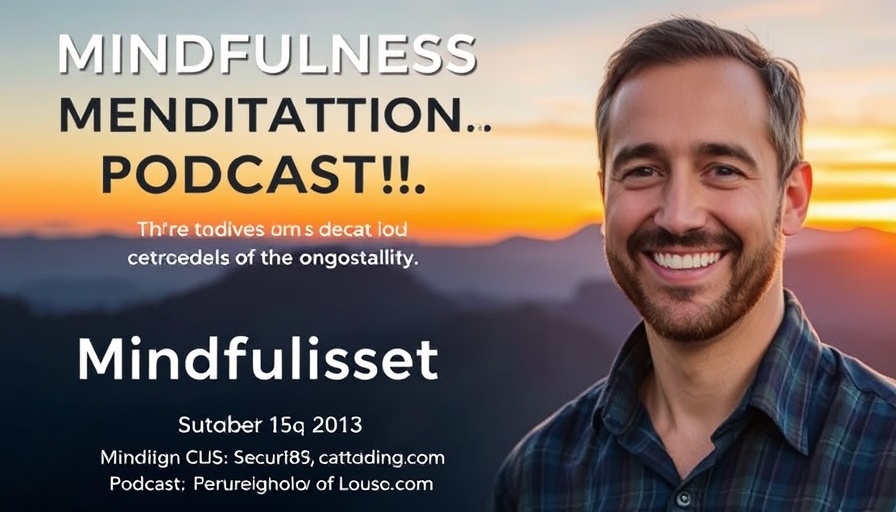
Harnessing Mindfulness for Better Decision-Making
When faced with decisions, big or small, it's easy to feel overwhelmed. However, the practice of mindfulness can provide clarity and help you discern which choices resonate best with your values and desires. Toby Sola’s guided meditation offers an accessible method to achieve this clarity. Whether you're grappling with life-altering choices, like starting a family, or daily inconveniences, such as what to eat for lunch, applying a mindful approach can transform how you make decisions.
Establishing a Mindful Framework
To kickstart the decision-making meditation, find a quiet space to sit comfortably with a straight posture. Take a few deep breaths to ground yourself. This initial silence is essential as it allows your mind to shift from the noise of everyday life to a more focused state. After centering yourself, think about a decision that’s currently weighing on your mind.
The Power of 'I Will' vs. 'I Will Not'
Sola emphasizes creating two statements: “I will” and “I will not.” This practice isolates your options, giving each equal consideration. For instance, if contemplating a significant life decision like whether or not to move cities for a job, define both sides clearly. Reflect on your 'I will' statement—what excites you about making this change? Then, shift your focus to the 'I will not' statement and explore the reasons against it. This dual consideration can highlight your true feelings about each outcome.
Imagining Possible Futures
With both statements in mind, visualization comes into play. Begin with the 'I will' statement and paint a vivid picture of your future if you pursue that option. For instance, if your decision revolves around starting a fitness program, imagine yourself energized and thriving. Then, switch your visualization to the 'I will not' statement. What might life look like if you choose not to pursue this change? How would that affect your daily routine, energy levels, and overall mood?
Listening to Your Emotions
Emotions are powerful indicators of our true desires. As you consider both sides of your decision, pay attention to your body. Do you feel a sense of excitement or trepidation as you think about your 'I will' statement? Recognizing these physical responses can guide you toward the realization of which option truly aligns with your inner self.
Bridging Thoughts and Feelings
This meditation technique not only provides clarity but also encourages a connection between thoughts and feelings. In a world where decisions often feel rushed or pressured, this mindfulness practice cultivates a more intentional approach. It’s about understanding yourself better and becoming more attuned to your emotional landscape when faced with choices. The decision-making process doesn’t need to be one fraught with anxiety; rather, it can become a moment of self-reflection and growth.
Practical Steps for Everyday Decisions
Integrating mindfulness techniques into your daily routine can enhance your overall well-being. Start small—apply this method to minor choices like what to wear in the morning or what to eat for dinner. Over time, as you refine this practice, you’ll find yourself naturally approaching more significant life decisions with a sense of equipped clarity and confidence.
The Value of Mindfulness in Life’s Choices
Incorporating these meditation techniques into your life isn't just about making better decisions; it fosters a healthier mindset and enhances your overall quality of living. By taking the time to meditate and reflect, you’re investing in yourself, ensuring that your choices are congruent with your true self.
As you explore mindfulness, think of it as a toolbox for navigating life’s myriad decisions—helping turn what often feels like insurmountable pressure into clear options laid out before you.
With this structure in mind, consider using the meditation outlined by Sola as you face decisions in your life. Embrace the stillness, reflect deeply, and trust that clarity will follow.
Now, imagine how empowered you’ll feel after practicing this meditation regularly! Wouldn't it be liberating to approach each decision in your life with confidence and clarity?
 Add Row
Add Row  Add
Add 




Write A Comment